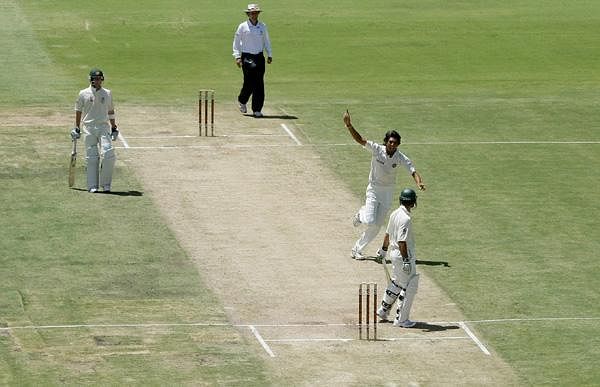
Ishant Sharma - A victim of poor fast bowling culture in India
At the very onset of this article, the question we need ask ourselves is whether we have given Ishant Sharma the right platform to succeed as a fast bowler in all sorts of conditions.
All an Indian fast bowler does when he gets dropped from the national side or during the off-season is that he either heads to the NCA in Bangalore, or to the MRF pace foundation in Chennai and just keep bowling in the nets, which is nowhere close to what a fast bowler has to do when he is not playing matches.

The spell that was jaw-dropping to witness
On that tour of Australia in 2008, it was very clear that Ishant Sharma revels in conditions which render extra bounce and relies heavily on what the surface has on offer for him. He can be just short of what you call a ‘good length’, which is also the very reason why he doesn’t generate a lot of sideways movement like a Shami or a Zaheer Khan manage to do.
And the way he dismissed a lot of Australian batsmen on that tour was synonymous of a bowler, who hits the deck hard and makes it awkward for a batsmen to play him off the front and the back-foot.
Albeit it is very obvious that the conditions in India don’t really suit Ishant, should we’ve adopted a more stifled approach and probably saved him for the overseas tours?
Also, his performances in limited overs cricket have hardly ever been convincing, which brings me to the question as to why MS Dhoni and the Indian think-tank didn’t make a decision on the no. of ODIs that Ishant Sharma played in (both home and abroad). For me, his horrendous showing in One-Day International cricket has marred his Test bowling prowess as well.
Part of the reason why Australia, South Africa and England continue to nurture their big fast-bowlers is down to the fact that they protect and rotate them superbly.
James Anderson, who leads the England bowling attack does not play in every game that England are involved in, and there’s a variety of things that he, or any other English fast bowler does, when they are away from national duty. And the same theory applies to Peter Siddle of Australia. He’s a Test specialist, and goes about his job in a professional manner, which is something that either Ishant Sharma or the Indian think-tank is failing to address.
The other thing is that India isn’t a land for lethal fast bowlers, which is also the reason why the country struggles to have a good fast bowling culture to work with.
Ishant Sharma has been magnificent in the 2 Tests against New Zealand so far, and once again reiterates the fact that the conditions in New Zealand and Australia suit his bowling style. Albeit it is ridiculous to have a fast bowler, who thrives only in foreign conditions or in conditions that suit his bowling, there has to be some kind of a method in the way you protect one of your premier fast bowlers, and that hasn’t happened in Ishant’s case.
Not to forget the 4-for he took against South Africa at Johannesburg in 2013, and more than the wickets he took, it was the manner in which he troubled the likes of Kallis and Amla that was awe-inspiring.
Such performances are a clear indicator of what your fast bowler can offer, and I believe that it’s the Indian way of cricket that has failed to make optimum use of Ishant Sharma’s ability, which is also the reason why he hasn’t quite performed to the levels that he could have.
Bottom line is that Ishant Sharma hasn’t performed to the levels that were expected of him when he burst on to scene against Pakistan in 2007, and the primary reason for his failure to produce the goods is because of the poor fast bowling culture in India.